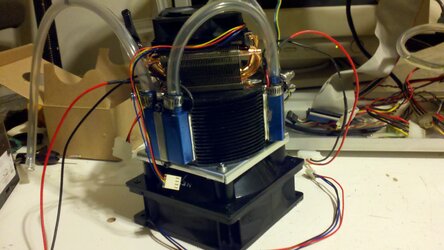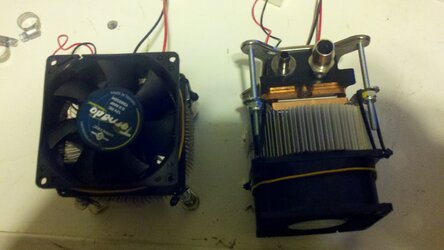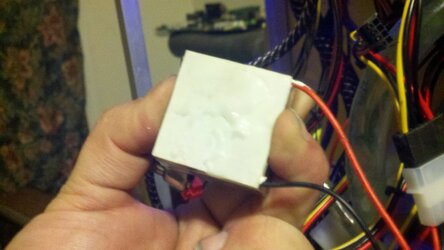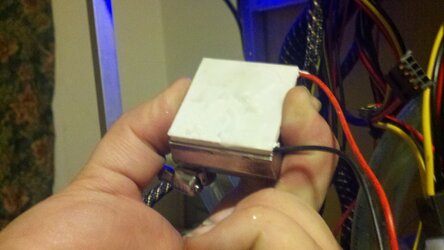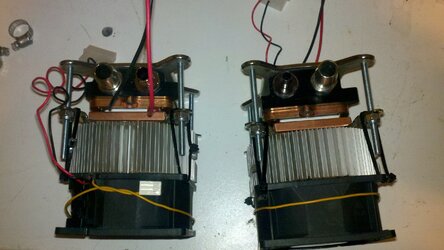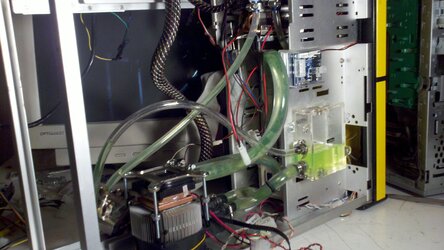Ok, I'll give you a little insight into TEC's that I have learned from 1 of my personal setups. The setup that I have uses 7 TEC's overall. Some are run at 5v (higher wattage ones) some are run at 12v (lower wattage ones). A single TEC will not make very much difference in cooling performance, and can just create more of a headache than watercooling. You will need at least 4-5 TEC's to make a substantial difference and get sub 0 temps. The thing that you have to take into account is the delta of the TEC's. So if it has a delta of 65, then if you keep the hot side of the TEC at 65 the cold side will be at 0. The delta ratings are given for TEC's for their maximum specified operational voltage, and if they are run with less voltage the delta will change. One of the big challenges (as mentioned by others) is finding a power supply that is capable of supplying the TEC's with enough power and amperage, while not running at it's limits. I personally use a 1250W power supply, because the TEC's alone are pulling around 50A. I was running this setup with 2 less TEC's on a 650W (good quality) and it killed it within 3 months because it was running on the ragged edge.
I'll go ahead and get into how I went about my setup, and maybe it will give you some ideas as well. My adventure started out with a coolit eliminator. It was good, but I wanted colder. So I took it apart to see what I could improve. I first got a 92-120mm fan adapter and a delta 160CFM fan to cool the heatsink better. I wired the TEC's in parallel because they were originally in series (to operate them at 12v). I then took 2 Maze 5 GPU blocks (I bought from a fellow user here), and used a 775 backplate, a 775 intel heatsink, a copper cold plate, a 200w tec, a vantec tornado 80mm fan, and some 3.5" screws to make my own coolers. I decided to run these at 6v (in series), because at 12v the copper cold plate was hitting 117F. I used a 200w TEC under the waterblock for the cpu, so in effect the 5 TEC's are cooling the water that cools the hot side of the TEC on the processor. This keeps the CPU TEC so cold that it will literally freeze water on contact (which is at least -30). The bios screen reports CPU temp as -32C. I run roughly a 60/40 mixture of coolant/distilled and never had any troubles with freezing. I'll go ahead and throw you some pics I have of the setup here. If you have any questions, I will do my best to answer them.
I figured that I would add that the cpu socket is packed with dielectric grease, and the motherboard had all the heatsinks removed and all the important bits taped off and was coated with several layers of automotive clear coat. The video card was as well also. The PCIE slot was also packed with dielectric grease as well. This setup will produce quite a bit of moisture on the board and block, so some form of insulation is absolutely necessary period.
